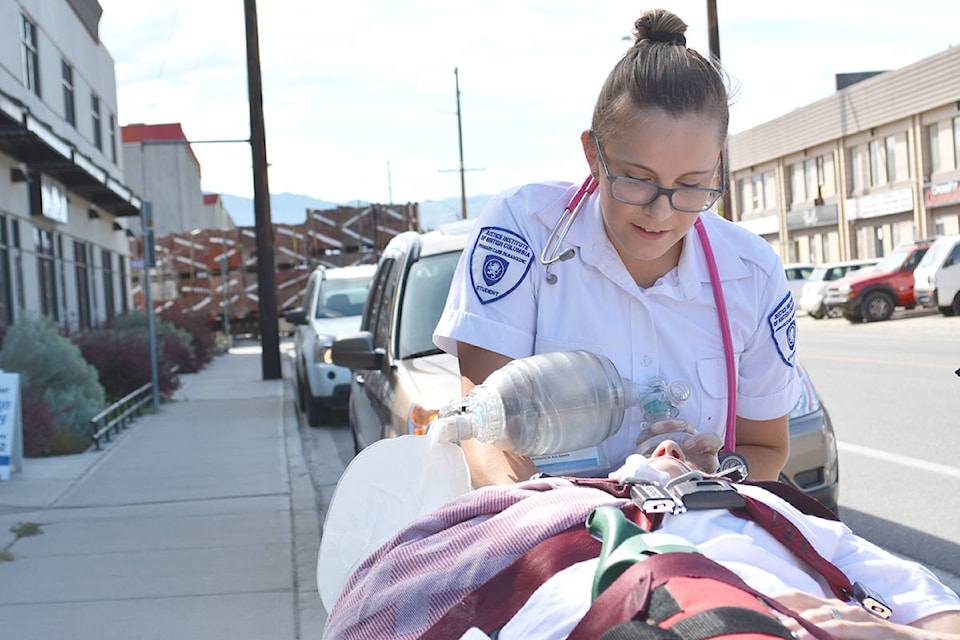Haley Fanning said she isn’t very squeamish, only over certain things.
At the end of the Primary Care Paramedic course with the Justice Institute of British Columbia’s Kelowna campus, 15 students experienced a variety of real-life situations Thursday to prepare them for their practicum.
Fanning, from Alberta, just finished her final exams and was ready to participate in the Professionalism Day.
“Apparently it’s going to be really gruesome so I’m kind of excited for that,” she said. “It’s kind of celebrating knowing all of our stuff and finishing the program.”
She loved the idea of doing something different every day and her dad is a doctor. She felt prepared for the simulations.
“You never know how you’re going to react to a situation,” she said.
After completing the four-month program, the students are taken through the simulation, which mimics everyday scenarios, said lead instructor at the Paramedic Academy, Colin Zoobkoff.
“During the program they practice lots of simulations within the campus and we do some stuff off of campus, but nothing like this. This is a very immersive type of simulation. This is something as realistic as you can get without having a real ambulance call.”
Around 40 volunteers took part as volunteer firemen and victims who wore makeup, with some dressed in bloody attire for their roles.
Zoobkoff said the simulations are also good transitions for students, who start their practicums Monday.
Team leader Gord Cheyne has been a paramedic since 1990 and is currently working in Vernon. This is his second time volunteering at the simulation day. As an instructor, he said he enjoys seeing students overcome barriers.
“That’s rewarding and pretty fulfilling,” he said.
He said as students enter the field, there is a network of people they can go to from WorkSafeBC, to colleagues and employers that offers support when dealing with difficult experiences.
“The best way (to avoid PTSD) is to stay healthy, stay focused; when you hang up your uniform, don’t take it home. Do something else, those are the kinds of things that have helped me get through,” he said.
For the students, he said to “remember the people you’re attending to are just people; flesh and blood. You’re not a superhero, just because you’re wearing a uniform it’s not a shield.”
